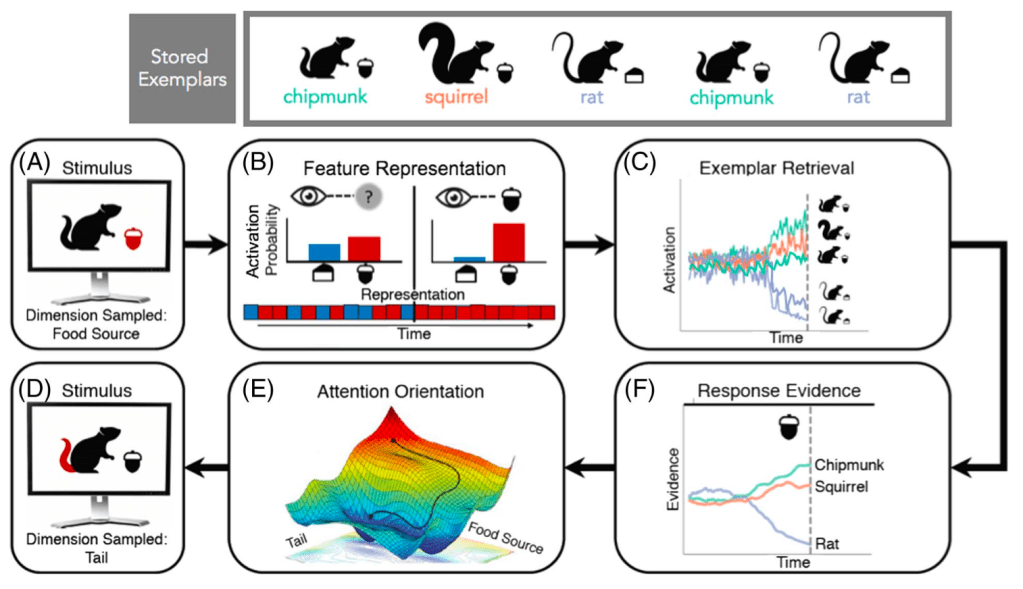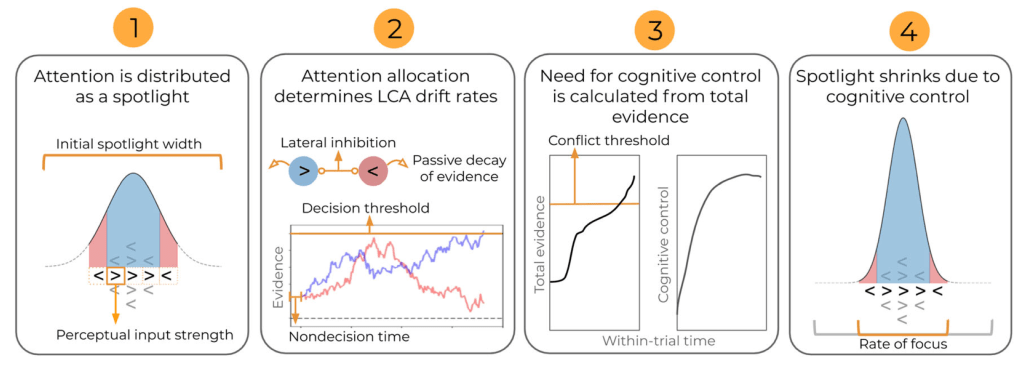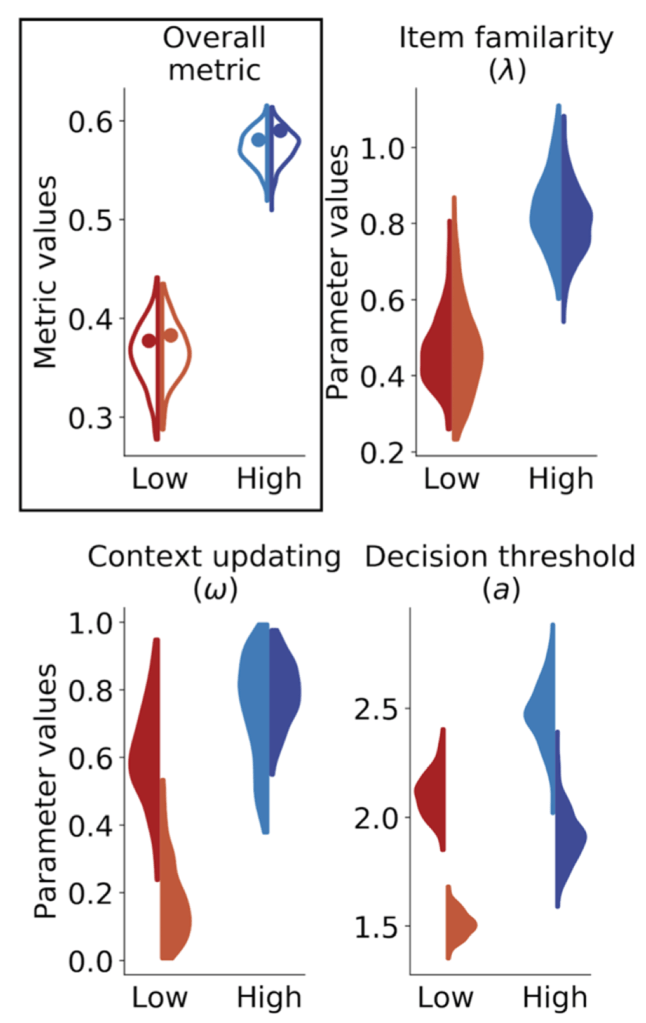Gaze correlates of strategic attention allocation during learning

Two fundamental difficulties when learning novel categories are deciding (a) what information is relevant and (b) when to use that information. Although previous theories have specified how observers learn to attend to relevant dimensions over time, those theories have largely remained silent about how attention should be allocated on a within-trial basis, which dimensions of information should be sampled, and how the temporal order of information sampling influences learning. In this line of work, we investigate: (a) How the distribution of attention is updated between trials over the course of learning and (b) how attention dynamically shifts among dimensions within a trial. We use both eye-tracking and choice response data to provide a stringent test of how attention and decision processes dynamically interact during category learning.
Representative Publications:
- Between- and within-trial attention dynamics
- Neural correlates of attentional updating
- Simplicity biases in human learning
Evidence accumulation dynamics during perceptual decisions

Growing evidence for moment-to-moment fluctuations in visual attention has led to questions about the impetus and time course of cognitive control. These questions are typically investigated with paradigms like the flanker task, which require participants to inhibit an automatic response before making a decision. Connectionist modeling work suggests that between-trial changes in attention result from fluctuations in conflict—as conflict occurs, attention needs to be upregulated to resolve it. Our work extends this intuition to the within-trial level, and propose that changes in cognitive control and attention are emergent properties of the dynamics of the decision itself. Combining a sequential sampling model framework with likelihood-free Bayesian approximation methods allows us to conduct quantified comparisons between subject-level fits, and identify the moment-to-moment influence of conflict resolution on within-trial evidence accumulation.
Representative Publications:
- Behavioral and EEG correlates of within-trial conflict resolution
- Two-dimensional shrinking spotlight model of visual attention
- Collapsing decision boundaries during perceptual choice
Cognitive assessment in aging and neurological disorders

Although there have been major strides toward uncovering the neurobehavioral mechanisms involved in cognitive functions like memory and decision making, methods for measuring behavior and accessing latent processes remain limited. To this end, our lab develops and utilizes construct-targeted tasks and corresponding computational models for comprehensive cognitive assessment. Our computational approaches allow us to decompose behavior into cognitively interpretable subprocesses, which we can compare both within and between participants.
